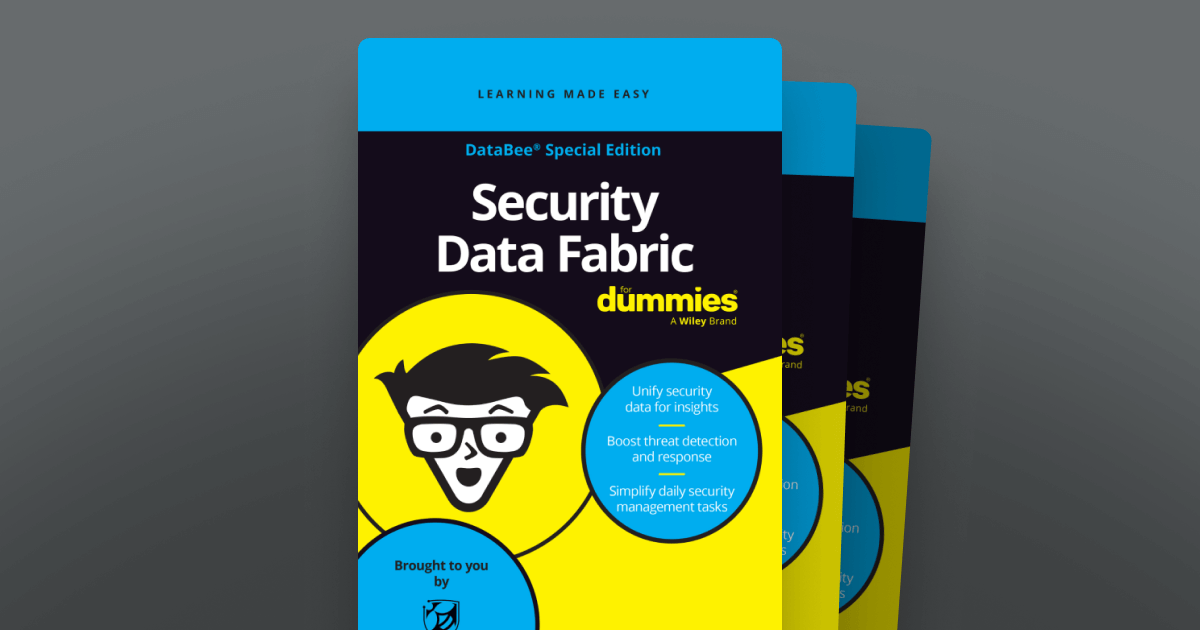How a Security Data Fabric Transforms Cybersecurity Operations and Enterprise Strategy
Free the CISO, a podcast series that attempts to free CISOs from their shackles so they can focus on securing their organization, is produced by CIO.com in partnership with DataBee®, from Comcast Technology Solutions.
In each episode, Robin Das, Executive Director at Comcast under the DataBee team, explores the CISO’s role through the position’s relationship with other security stakeholders, from regulators and the Board of Directors to internal personnel and outside vendors.
How a Security Data Fabric Transforms Compliance, Cybersecurity Operations and More
In today’s enterprise environments, security teams are overwhelmed by data from dozens—sometimes hundreds—of tools. From SIEMs to EDRs to firewalls, each tool generates its own stream of information, often in incompatible formats. The result? Fragmented visibility, duplicated alerts, and rising costs.
That’s where a security data fabric comes in.
More Than Just Cybersecurity
A security data fabric isn’t just a technical solution—it’s a strategic asset. It delivers benefits that ripple across the organization, from IT operations to compliance and risk management. Here’s how:
1. Optimize Costs Through Smarter Data Management
Security data fabrics help organizations manage storage and processing costs by:
- Compressing high-volume or low-value data
- Flattening and deduplicating redundant information
- Preserving data integrity while minimizing resource usage
This means less waste, managed infrastructure costs, and more efficient use of existing tools.
2. Maximize the Value of Your Security Tools
Instead of replacing your current stack, a security data fabric enhances it. By creating an integrated layer across tools, it:
- Enriches data with context from multiple sources
- Deduplicates the same insights from different tools
- Reduces false positives and alert fatigue through correlation of data across silos
This helps your organization with detection of slow-moving threats and insider risks—without adding complexity.
3. Break Down Silos Across Teams
Security isn’t just the SOC’s responsibility anymore. Governance, risk, and compliance teams need access to the same data. A security data fabric helps to:
- Centralize access regardless of role
- Connect data from on-prem, cloud, and SaaS environments
- Create a unified, intelligent data layer
This shared visibility fosters collaboration, builds trust, and enables fast, more informed decision-making across the enterprise.
From Fragmented to Strategic
Ultimately, a security data fabric helps transform fragmented data into a strategic asset. It empowers organizations to be agile, secure, and aligned—across every function.
Want to learn more? Download the full guide:
How a Security Data Fabric Transforms Compliance, Cybersecurity Operations and More
In today’s enterprise environments, security teams are overwhelmed by data from dozens—sometimes hundreds—of tools. From SIEMs to EDRs to firewalls, each tool generates its own stream of information, often in incompatible formats. The result? Fragmented visibility, duplicated alerts, and rising costs.
That’s where a security data fabric comes in.
More Than Just Cybersecurity
A security data fabric isn’t just a technical solution—it’s a strategic asset. It delivers benefits that ripple across the organization, from IT operations to compliance and risk management. Here’s how:
1. Optimize Costs Through Smarter Data Management
Security data fabrics help organizations manage storage and processing costs by:
- Compressing high-volume or low-value data
- Flattening and deduplicating redundant information
- Preserving data integrity while minimizing resource usage
This means less waste, managed infrastructure costs, and more efficient use of existing tools.
2. Maximize the Value of Your Security Tools
Instead of replacing your current stack, a security data fabric enhances it. By creating an integrated layer across tools, it:
- Enriches data with context from multiple sources
- Deduplicates the same insights from different tools
- Reduces false positives and alert fatigue through correlation of data across silos
This helps your organization with detection of slow-moving threats and insider risks—without adding complexity.
3. Break Down Silos Across Teams
Security isn’t just the SOC’s responsibility anymore. Governance, risk, and compliance teams need access to the same data. A security data fabric helps to:
- Centralize access regardless of role
- Connect data from on-prem, cloud, and SaaS environments
- Create a unified, intelligent data layer
This shared visibility fosters collaboration, builds trust, and enables fast, more informed decision-making across the enterprise.
From Fragmented to Strategic
Ultimately, a security data fabric helps transform fragmented data into a strategic asset. It empowers organizations to be agile, secure, and aligned—across every function.









